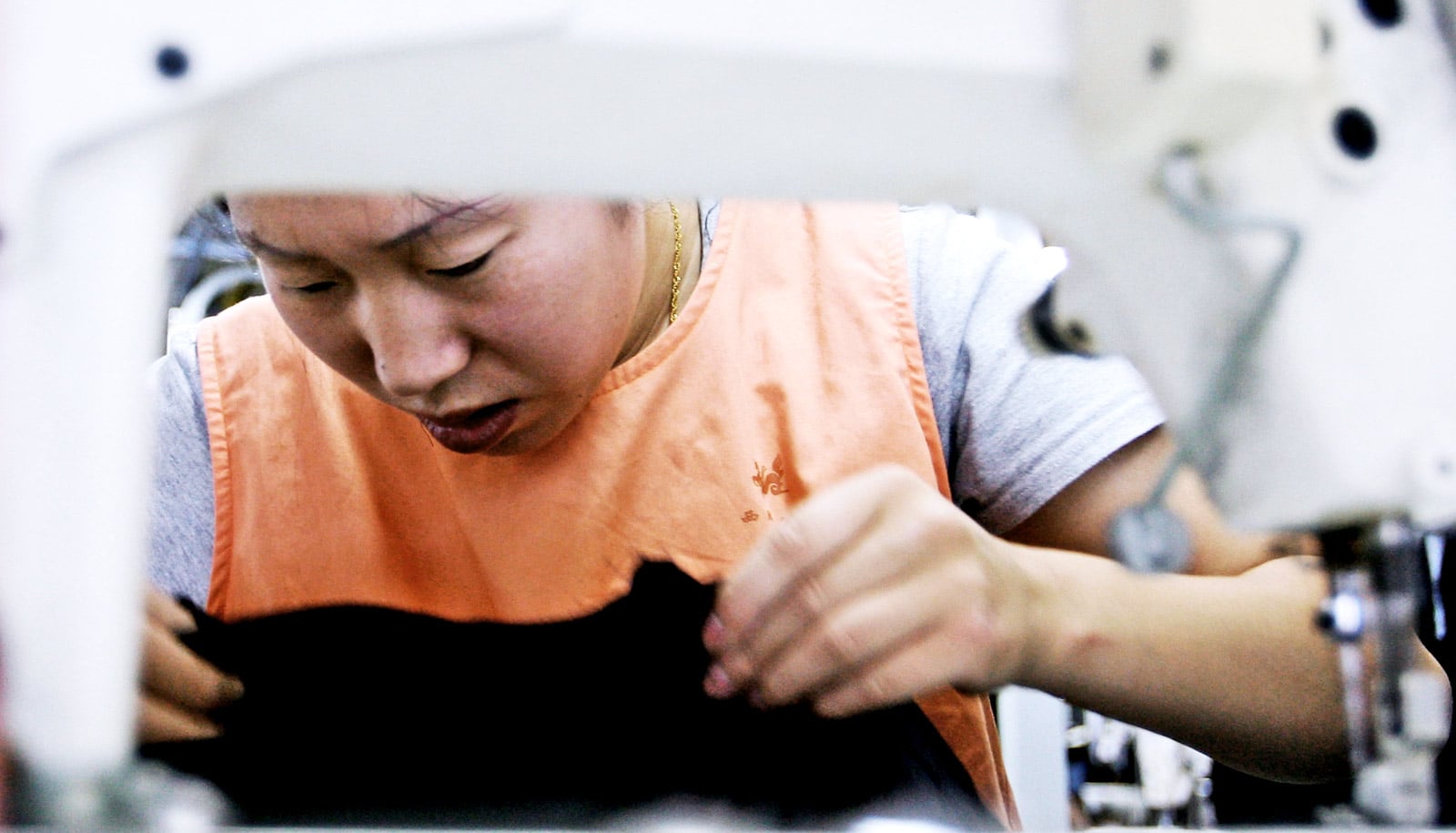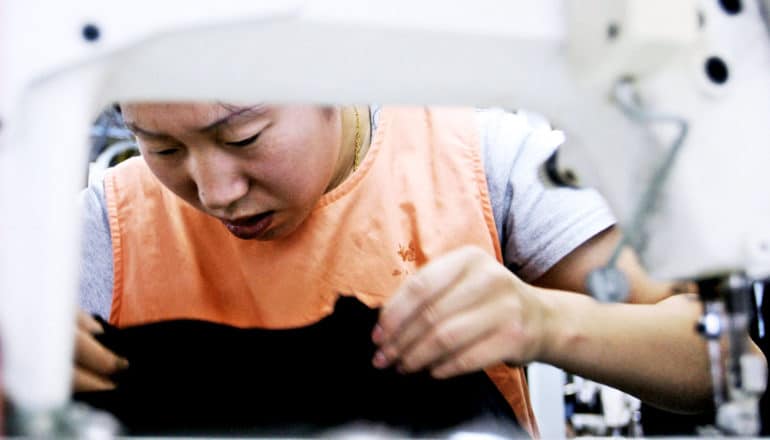
A Chinese labourer works at the Youngor Group textile factory on June 8, 2005 in Ningbo, Zhejiang Province, China. (Credit: Guang Niu/Getty Images )
Severe air pollution cuts productivity at work
"Working in a highly polluted setting for long periods of time could affect your mood or disposition to work."

According to new research, long-term exposure to air pollution is not just unhealthy—it also reduces employee productivity.
“Most of us are familiar with the negative impact air pollution can have on health, but as economists, we wanted to look for other socioeconomic outcomes,” says Alberto Salvo, associate professor in the economics department at the National University of Singapore Faculty of Arts and Social Sciences.
“Our aim with this research was to broaden the understanding of air pollution in ways that have not been explored. We typically think that firms benefit from lax pollution regulations, by saving on emission control equipment and the like; here we document an adverse effect on the productivity of their work force.”
Fine particles in the air
For the study in the American Economic Journal: Applied Economics, researchers gathered information from factories in China for more than a year, interviewing managers at 12 firms in four separate provinces. They also received access to data for two factories, in Henan and Jiangsu.
Workers at the textile mill factories were paid for each piece of fabric they made, so researchers could examine daily productivity records for specific workers on particular shifts. Researchers then compared the number of pieces each worker produced on each day to his or her exposure to particulate matter over time.
Measuring how many fine particles less than 2.5 micrometers in diameter (PM2.5) are in the air is a standard way of determining the severity of pollution, researchers say. At the two factory locations in the study, pollution levels varied significantly from day to day, but were consistently high.
The PM2.5 level at one location averaged about seven times the US Environmental Protection Agency safe limit of 85 micrograms per cubic meter.
Daily fluctuations in pollution did not immediately affect the productivity of workers, but researchers observed a drop in output when they measured for more prolonged exposures of up to 30 days. The study controlled for regional economic activity and other confounding factors.
“We found that an increase in PM2.5, by 10 micrograms per cubic meter sustained over 25 days, reduces daily output by 1 percent, harming firms and workers,” says associate professor Liu Haoming. “The effects are subtle but highly significant.
“High levels of particles are visible and might affect an individual’s well-being in a multitude of ways. Besides entering via the lungs and into the bloodstream, there could also be a psychological element.
A ‘subtle influence’
A previous study that focused on workers packing fruit in California showed a large and immediate effect from exposure to ambient PM2.5: when levels rise 10 micrograms per cubic meter, workers are six percent less productive on the same day.
That study’s estimate appears large for a developing country, researchers say.
“Laborers in China can be working under far worse daily conditions while maintaining levels of productivity that look comparable to clean air days. If the effect were this pronounced and this immediate, we think that factory and office managers would take more notice of pollution than transpired in our field interviews,” Liu says. “Therefore, our finding that pollution has a subtle influence on productivity seems realistic.”
Source: National University of Singapore
The post Severe air pollution cuts productivity at work appeared first on Futurity.
Share this article:
This article uses material from the Futurity article, and is licenced under a CC BY-SA 4.0 International License. Images, videos and audio are available under their respective licenses.


